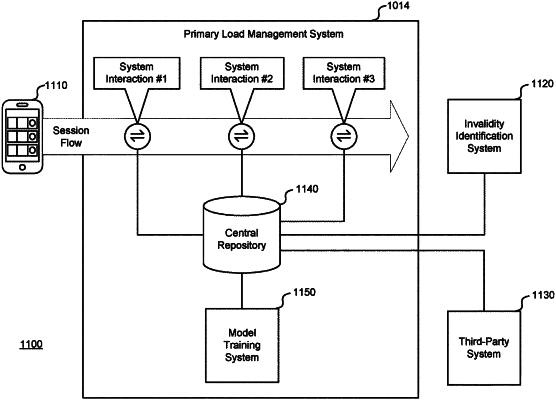| CPC G06N 5/04 (2013.01) [G06N 20/00 (2019.01)] | 20 Claims |

|
1. A computer-implemented method comprising:
collecting a feature set of one or more features characterizing a plurality of users, each feature of the feature set corresponding to an attribute or characteristic of a previous interaction between a user device and a primary load management system, and the primary load management system managing access to and assignment of a plurality of access rights;
storing, for each user of the plurality of users, a log line representing a user, the log line being a structured data string representing at least a subset of the feature set, each log line including a label representing whether or not the user or a data element within the structured data string is associated with an invalid action, wherein the log line includes metadata associated with each previous interaction between the user device and one or more subsystems of the primary load management system, and wherein the metadata includes a unique session identifier corresponding to each of the previous interaction between the user device and one or more subsystems of the primary load management system;
training a machine-learning model using the stored log lines and one or more machine-learning algorithms, the training of the machine-learning model including automatically detecting patterns of features within the feature set;
receiving a communication from a user device, the communication corresponding to a request for one or more access rights to a resource to be assigned to the user device;
retrieving a log line corresponding to the user device;
inputting the log line corresponding to the user device into the trained machine-learning model;
in response to inputting the log line into the trained machine-learning model, generating an output corresponding to a recommendation to deny or grant the request for the one or more access rights to the resource, the denial of the request indicating that the request is associated with the invalid action, and the granting of the request indicating that the request is not associated with the invalid action; and
performing an action based on the generated output,
wherein, when the generated output corresponds to a recommendation to grant the request for the one or more access rights to the resource, performing the action includes enabling the assignment of the one or more access rights to the user device to proceed.
|